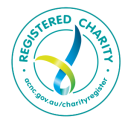New legislation has been tabled in Parliament to introduce climate-related financial disclosure requirements for large entities.
The Treasury Laws Amendment (Financial Market Infrastructure and Other Measures) Bill 2024 introduces mandatory disclosure requirements for large entities who must submit an annual ‘sustainability report’, outlining their emissions and addressing their climate-related risks and opportunities. If passed, the legislation will be a significant step towards addressing corporate climate risk and driving climate action through the value chain.
Why is this important?
Firstly, and most importantly, the Bill requires the largest emitters to transparently report on how their operations contribute to climate change and how they’re managing the associated risks. This allows regulators to put in place measures to manage the risks to the financial system posed by climate change.
The Bill brings Australia’s financial disclosure legislation in line with international standards, providing entities that operate globally with a consistent reporting approach across markets. It also provides confidence to international investors that Australian companies are aware of and addressing their climate-related risks.
Who will need to disclose climate-related financial information?
Entities that lodge financial reports under Chapter 2M of the Corporations Act and meet certain minimum size thresholds, or have emissions reporting obligations under the National Greenhouse and Energy Reporting (NGER) scheme will be required to disclose.
The requirements of the new legislation will come into force on 1 Jan 2025, with a four-year phased implementation plan starting with the largest entities:
Entities must meet at least two of these criteria: | NGER Reporting Status | Assets | |||||
Revenue | Gross assets | Number of employees | |||||
| Group 1 – from 1 Jan 2025 | $500 million+ | $1 billion+ | 500+ | Above NGER threshold | N/A | ||
| Group 2 – from 1 July 2026 | $200 million+ | $500 million+ | 250+ | All other NGER reporters | $5 billion+ assets under management | ||
| Group 3 – from 1 July 2027 | $50 million+ | $25 million+ | 100+ | N/A | N/A | ||
What goes in the sustainability report?
The Sustainability Report must be compliant with Australian Sustainability Reporting Standards exposure drafts which have recently closed for comment. Required content will include:
- Climate-related risks and opportunities
- Scope 1 emissions – direct emissions from the organisation’s operations e.g. fuel, refrigerant gas and fugitive emissions.
- Scope 2 emissions – indirect emissions from the purchase of electricity, steam, heat or cooling.
- Scope 3 emissions – indirect emissions arising from the organisation’s upstream and downstream value chain.
- Climate resilience assessments against at least 2 future scenarios (including a temperature increase to 1.5oC above pre-industrial levels).
Reporting entities can also disclose ‘financed emissions’, e.g. emissions arising from loans and investments, though this is not proposed as a mandatory requirement at this stage.
Why only climate reporting?
While the sustainability reports will only need to include climate-related disclosures at this point, the Bill allows for the Minister to add other types of sustainability-related disclosure in the future.
Internationally, the Taskforce for Climate-Related Financial Disclosures was closely followed by the Taskforce for Nature-related Financial Disclosures. With the recent introduction of the Australian Government’s Nature Repair Bill, it’s possible that Australian legislation will follow suit with mandatory reporting on how business operations impact on nature.
My organisation is not big enough to be a reporting entity – how does this apply to me?
While you may not be required to report to the Government under the proposed legislation, you may be impacted by the disclosure requirements if your organisation sits within the value chain of a reporting entity. For example, if you’re a farmer who supplies beef to a large supermarket chain which is a reporting entity, the customer may request information from you to include in their sustainability report under ‘scope 3 emissions’. This could include a request for information on how many tonnes of greenhouse gases you emit and what you’re doing to reduce your emissions.
With more and more organisations pushing to meet emissions reduction targets, they’re looking for opportunities to minimise their scope 3 emissions. If you can demonstrate that you have measured, reduced and inset your emissions, this could put you in a more competitive position.
Ready to find out more?
Explore our range of educational resources in our Carbon Farming Education Hub where we frequently publish educational articles, webinars, and guidebooks.
When you’re ready to explore the feasibility of undertaking a carbon project on your property, email us at [email protected] or give us a bell at (08) 6835 1140 to be connected with one of our project facilitators.


![AFN – Cert Accredited Expert [RGB] AFN - Cert Accredited Expert [RGB]](https://carbonfarming.org.au/wp-content/uploads/elementor/thumbs/AFN-Cert-Accredited-Expert-RGB-e1725255016744-qti2uogw4b9a3s6au2d1bbf4utb8ggjuwvkj4qpce8.png)